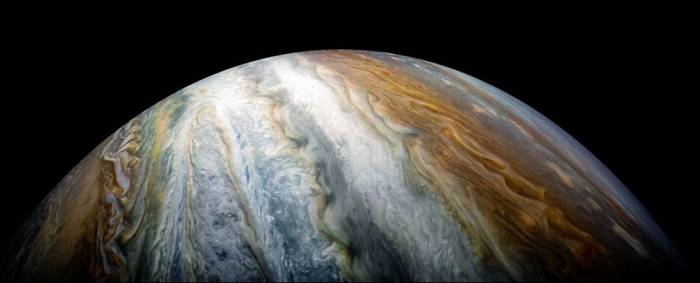Through June, Jupiter sustains its brightest point for the year, reaching "opposition" - which is when the sun and Jupiter are opposite each other (from Earth's perspective) at 8:39 pm (ET) May 8 on the East Coast of America, according to the US Naval Observatory.
Think of it as a "full" Jupiter. The giant will be -2.5 magnitude, which is quite bright, hanging out all night in the constellation Libra.
Early in May, Jupiter rises in the east-southeast at 8:29 pm (ET), but by the end of the month the planet rises around 6:15, well before the sun sets.
On May 8, the day of opposition, Jupiter rises at 7:57 pm, and the sun sets at 8:07. Late in May, the gibbous moon and Jupiter dance a tango as our lunar object approaches the giant planet May 26 and gets close May 27.
Find Venus in the western heavens during the evening, when the sparkling planet is -3.9 magnitude, quite bright. Our neighboring planet sets around 10:20 pm early in the month and around 11 pm late in May.
A very young, skinny crescent moon nestles near Venus on the evening of May 17. Wispy young crescent moons always appear in the western sky at nightfall.
Saturn rises around midnight in the southeast early in May and crosses south before sunrise. The ringed planet is a zero-magnitude object (bright), and on May 4-5, find the gibbous moon loitering near Saturn both mornings.
Earth's other neighboring planet, Mars, ascends the southeastern heavens around 1:30 am early in May, and the reddish planet gets brighter throughout the month.
The planet begins May at -0.4 magnitude, then grows to -0.6 in mid-month and -0.9 later in the month, according to the Royal Astronomical Society (rasc.ca).
The apogee moon (its closest point to Earth for the month) finds Mars on May 6 - see it on your early morning dog walk.
The Eta Aquariid meteors are expected to peak on the mornings of May 5 (according to the International Meteor Organization, imo.net) and May 6 (according to the Royal Astronomical Society).
These shooting stars originate as trailing dusty leftovers from the famed Comet Halley. Skygazers could see as many as 40 meteors an hour, but the bright gibbous moon will probably wash out most of them.
The Washington Post















































